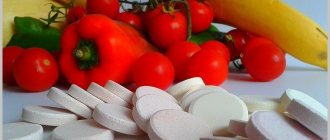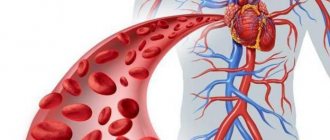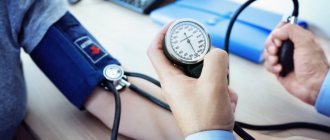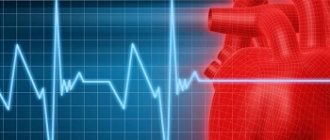Key questions: Definition and concept of diabetes. Normal blood glucose numbers. Glucose in urine. Glycated hemoglobin and fructosamines. C-peptide and other tests.
Diabetes mellitus is a group of diseases in which chronically elevated. Normally, fasting blood glucose levels are maintained between 3.3 and 5.5; after meals – up to 7.8 mmol/l.
There are other units for measuring blood glucose: mg/dL. To convert to mmol/l, the value in mg/dl must be divided by 18.
In the body, blood glucose levels are reduced by the hormone insulin , which is produced in the pancreas.
If little or no insulin is produced, or low-quality insulin is produced, or a person has had their pancreas removed, etc., the level of glucose in the blood rises and the person is diagnosed with diabetes mellitus.
Depending on the cause of the disease, the type of diabetes is determined (type 1, type 2, pancreatogenic, etc.).
In type 1 diabetes, insulin is not produced at all or very little is produced.
In type 2 diabetes mellitus, at the initial stage of the disease, insulin can be produced even in excess quantities, but its effect is weakened (due to a decrease in the body’s sensitivity to insulin or “low-quality” insulin).
In pancreatogenic diabetes, insulin is not produced after pancreatitis or removal of the pancreas.
These are the most common types of diabetes, but not all.
A separate condition is gestational diabetes mellitus, which develops in pregnant women and resolves after pregnancy.
The result is one: high blood glucose levels.
Treatment of diabetes
Diabetes mellitus is a group of metabolic diseases characterized by high levels of glucose (“sugar”) in the blood.
Why do we need glucose
The norm of blood glucose (sugar) in whole capillary blood is 3.3-5.5 mmol/l in the morning on an empty stomach (i.e. after 7-14 hours of overnight fasting) and up to 7.8 mmol/l after meals (i.e. 1.5-2 hours after the last meal).
Normally, in the human body, glucose is used by the cell as an energy source (in other words, the body’s cells “feed” on glucose from the blood). The more a cell works, the correspondingly more energy (glucose) it requires.
Glucose (the expression “blood sugar” is more often used, but this is not entirely true) constantly circulates in the human blood. There are 2 ways for glucose to enter the human body: - the first is through food containing carbohydrates, - the second is through the production of glucose by the liver (this is the reason that in diabetes mellitus, even if the patient has not eaten anything, the blood glucose level can be increased).
However, in order to be used as energy, glucose from the blood must go to muscles (to do work), fat tissue, or the liver (the body's glucose storage facility). This occurs under the influence of the hormone insulin, which is produced by beta cells of the pancreas. As soon as the blood glucose level rises after a meal, the pancreas instantly releases insulin into the blood, which, in turn, connects with insulin receptors on muscle, fat or liver cells. Insulin, like a key, “opens” cells to allow glucose to enter them, resulting in the level of glucose (sugar) in the blood returning to normal. Between meals and at night, if necessary, glucose enters the blood from the liver's depot, so at night insulin controls the liver so that it does not release too much glucose into the blood.
If a violation occurs at any stage of this process, diabetes mellitus occurs.
Types of diabetes
Diabetes mellitus type 1
(previously used the name: insulin-dependent diabetes mellitus) develops mainly at a young age (usually before 30 years of age, although type 1 diabetes mellitus can also develop at a later age).
Type 1 diabetes mellitus is caused by the cessation of insulin production by the pancreas due to the death of β-cells (responsible for the production of insulin in the pancreas). The development of type 1 diabetes mellitus occurs against the background of a special genetic predisposition (i.e. a person was born with it), which, when exposed to some external factors (for example, viruses), leads to a change in the state of the body’s immune system. The body of a patient with type 1 diabetes begins to perceive its pancreatic β-cells as foreign and protects itself from them by producing antibodies (similar to what happens when protecting against infection), leading to the death of pancreatic β-cells, which means severe insufficiency insulin.
Diabetes mellitus 1
type develops when at least 90% of the β cells of the pancreas die. Let us recall the mechanism of action of insulin, its function as a “key” that opens cells to sugar. In type 1 diabetes mellitus, this key disappeared from the blood (see figure).
Lack of insulin in type 1 diabetes mellitus The onset of type 1 diabetes mellitus is acute, always accompanied by severe symptoms of hyperglycemia (high blood sugar): - weight loss (the patient involuntarily loses weight), - a constant feeling of hunger, - thirst, dry mouth (the patient drinks a lot fluids, including at night), - frequent urination (in regular or large portions, including at night), - weakness.
If you do not consult a doctor in time and do not start treating type 1 diabetes with insulin, the condition worsens, and diabetic coma very often develops.
Diabetes mellitus type 2
(previously called insulin-dependent diabetes mellitus) is much more common than type 1 diabetes mellitus. The incidence of type 2 diabetes mellitus is typical for older people: it is detected, as a rule, after 40 years of age, although recently, according to WHO experts, the average age of patients with type 2 diabetes mellitus is getting younger.
About 80% of people with type 2 diabetes are overweight. Also, type 2 diabetes is characterized by heredity - a high prevalence among close relatives.
In type 2 diabetes, the pancreas continues to produce insulin, often in larger quantities than usual. Although there are also cases of type 2 diabetes mellitus with reduced insulin secretion.
The main defect in type 2 diabetes is that the cells do not “sense” insulin well, that is, they do not open well in response to interaction with it, so sugar from the blood cannot fully penetrate inside (see figure). Blood sugar level remains elevated. This state of decreased sensitivity to insulin is called insulin resistance.
Low sensitivity to insulin in type 2 diabetes mellitus You can figuratively imagine that the “keyholes” (scientifically speaking - insulin receptors) on the cell doors are deformed, and there is no perfect match with the keys - insulin molecules. It takes more effort (more keys, i.e. more insulin) to overcome the insulin receptor defect. The pancreas cannot supply a sufficient amount of insulin into the blood to overcome insulin resistance and completely normalize blood sugar levels, because In type 2 diabetes mellitus, the capabilities of β cells are still limited.
As a result, with type 2 diabetes, a paradoxical situation arises when there is a lot of both insulin and sugar in the blood at the same time.
Type 2 diabetes mellitus, unlike type 1 diabetes mellitus, begins gradually, often completely unnoticed by the patient. Therefore, a person can be sick for quite a long time, but not know about it. Elevated blood sugar (glucose) levels may be detected by chance during an examination for some other reason.
At the same time, there are cases with clear manifestations of hyperglycemia:
- - weakness, fatigue, - thirst, dry mouth (the patient drinks a lot of fluids, including at night),
- - frequent urination (regular or large portions, including at night),
- - itching of the skin (especially in the perineal area),
- - slow wound healing, - frequent infections, - blurred vision.
- Diabetic coma develops much less frequently, usually
- - if type 2 diabetes mellitus is accompanied by some other very serious disease: pneumonia, serious injury, suppurative processes, heart attack, etc.
Treatment of diabetes
Treatment for diabetes differs depending on the type of diabetes.
In type 1 diabetes mellitus, which occurs as a result of an absolute insufficiency of insulin secretion by the own pancreas, constant self-monitoring and insulin treatment are required to preserve life. It should be emphasized that treatment with externally administered insulin is the only treatment option in this situation. The selection of doses and treatment regimens for diabetes mellitus with insulin is carried out individually, taking into account age, gender, physical activity, and individual sensitivity to insulin.
For type 1 diabetes mellitus
sometimes, at the very beginning of the disease, after normalization of blood glucose during treatment of diabetes mellitus with insulin, the need for it suddenly begins to decrease until it is completely canceled. But this is not recovery. This phenomenon is called the “honeymoon” of diabetes, or scientifically, remission. This is explained by the fact that after blood sugar is normalized with the help of insulin, the β cells that have not yet died can work for some time. Subsequently, they all die, and the person needs treatment for diabetes mellitus with insulin for life. Anyone who develops type 1 diabetes for the first time should be warned by their doctor about the possible occurrence of such a situation and what to do in this case.
Treatment of diabetes mellitus with insulin can be carried out using insulin syringes, pens or an insulin pump.
Insulin pump therapy is an alternative treatment for diabetes mellitus in people who heavily use a syringe or pen to inject insulin and regularly measure their blood sugar levels. Insulin pump therapy is used instead of treating diabetes with injections. The pump is worn on the body or on clothing, for example, on a belt. Currently, about 250 thousand people around the world use insulin pumps.
The main goal of treating type 2 diabetes is to improve the sensitivity of cells to insulin. The causes of poor insulin sensitivity are not yet fully understood. However, it has long been known that the most powerful factor in the formation of insulin resistance is excess weight, i.e. excessive accumulation of fat in the body. Numerous scientific studies and long-term observations of patients show that weight loss during the treatment of type 2 diabetes in most patients can achieve a significant improvement in blood sugar levels.
In type 2 diabetes, normalizing weight can lead to complete normalization of blood sugar for a long time, although this cannot be called a complete recovery.
If diet and exercise aimed at weight loss do not provide sufficient effect in the treatment of type 2 diabetes, you have to resort to medication. They are available in tablets. Some of them act on the pancreas, increasing insulin production, while others improve its effect (reduce insulin resistance). Thus, the drugs themselves used to treat type 2 diabetes mellitus do not lower blood sugar; insulin does this; therefore, to obtain the effect of tablets in the treatment of diabetes mellitus, a preserved reserve of pancreatic β-cells is necessary. This makes it clear why it is pointless to use tablet drugs in the treatment of type 1 diabetes, because most of the β cells have already died.
Insulin is often used to treat type 2 diabetes. Treatment with insulin for type 2 diabetes mellitus can be prescribed as a temporary measure, for example, during surgery, severe acute illnesses, or as permanent treatment. This is why it is currently not recommended to call type 2 diabetes mellitus non-insulin dependent. The type of diabetes treatment does not determine the type of diabetes.
Diet plays the most important role in the treatment of diabetes.
Diet for diabetes
Despite the common goals in the treatment of different types of diabetes (elimination of symptoms of high blood sugar, minimizing the risk of hypoglycemia, prevention of complications), diet patterns for type 1 and type 2 diabetes mellitus differ significantly. There is no single diet plan for diabetes mellitus.
In type 1 diabetes mellitus, the occurrence of which is associated with the death of beta cells of the pancreas and insulin deficiency, the main method of treatment is insulin replacement therapy, and dietary restrictions, according to modern views, are of an auxiliary nature and should be given only to the extent that insulin therapy differs from insulin production in a healthy person.
The fundamental principles of prescribing a diet for type 1 diabetes mellitus have been subject to critical revision in recent years.
One of the principles of the traditional diet for diabetes is the recommendation to consume a strictly defined, identical amount of calories every day. Each patient was prescribed a daily calorie requirement based on their “ideal weight.” This makes no sense and is impossible for the following reasons:
a) in healthy individuals with normal weight, the balance between energy intake and expenditure varies greatly from day to day. Energy expenditure in healthy individuals is variable because their physical activity is variable. Consequently, if a patient with type 1 diabetes is prescribed a given diet with a daily consumption of a fixed, identical amount of calories, then in order to maintain a normal weight, one would have to recommend an equally given, strict plan of physical activity for every day, which is absolutely unrealistic.
b) in patients with type 1 diabetes mellitus with normal weight and a properly selected insulin treatment regimen for diabetes mellitus, appetite regulation does not differ from that in healthy individuals. The fact that they sometimes have to be forced to eat to prevent hypoglycemia, even in the absence of appetite, is most often a consequence of not entirely adequate insulin therapy.
Improved treatment regimens for diabetes mellitus using insulin and self-monitoring of metabolism based on blood sugar levels give the patient the opportunity to regulate food intake only depending on the feeling of hunger and satiety, like healthy people. Thus, the diet of a patient with type 1 diabetes mellitus corresponds to a complete healthy diet (balanced in calories and content of essential nutrients). The only difference is that the insulin injected does not “know” when or how much you eat. Therefore, you yourself must ensure that the action of insulin corresponds to your diet. Therefore, you need to know which foods increase your blood sugar.
The main treatment method for type 2 diabetes is normalization of body weight through a low-calorie diet and increased physical activity. Diet for type 2 diabetes is very important; it is one of the significant components that allows you to achieve success.
All food products consist of three components: proteins, fats and carbohydrates. They all contain calories, but not all increase blood sugar.
Only carbohydrates have a pronounced blood sugar-raising effect. What foods contain carbohydrates? It's easy to remember: most foods are plant-based, and animal foods are limited to liquid dairy products. It is important for you to know whether blood sugar rises after certain foods, and if so, by how much. There are types of carbohydrate foods after which blood sugar either does not rise at all or rises only slightly.
All carbohydrates can be roughly divided into two groups: those containing rapidly absorbed (“fast”) carbohydrates and slowly absorbed (“slow”) carbohydrates. Products with “fast” carbohydrates contain refined sugars and include preserves and jams, candies, sweets, fruits, and fruit juices. “Fast” carbohydrates cause a sharp increase in blood sugar (depending on the amount of food eaten) because they are quickly absorbed into the blood, so it is better to exclude them from the diet for diabetes. “Slow” carbohydrates are much more beneficial for patients with diabetes, because they take much longer to be absorbed. In addition, the absorption of sugars is slowed down by the fiber contained in food, so the diet when treating diabetes should be enriched with foods rich in fiber.
Here are a few simple rules to follow when treating diabetes: food should be taken in small portions and often (4-6 times a day); adhere to the established diet - try not to skip meals; do not overeat - eat as much as recommended by your doctor; use bread made from wholemeal flour or with bran; vegetables (except potatoes and legumes) should be eaten daily; Avoid eating “fast” carbohydrates.
Exercise for Diabetes Physical exercise in the treatment of diabetes is very important: it increases the sensitivity of body tissues to insulin and, thus, helps reduce blood sugar levels.
Housework, walking, and jogging can be considered physical activity. Preference should be given to regular and dosed physical exercise: sudden and intense exercise can cause problems with maintaining normal sugar levels.
If you are an athlete or sportswoman, you have no contraindications to playing sports, provided that your blood sugar levels are well controlled and all necessary measures are taken to prevent a significant decrease in it.
Prevention of complications of diabetes Patients with diabetes have an increased risk of developing complications from the heart and blood vessels (especially in the legs and kidneys). Regular physical activity, sometimes just walking, is enough to prevent circulatory problems in the feet.
If you have diabetes, an untreated wound or abrasion on the foot can develop into a serious problem. Even minor cuts or scrapes on the feet take longer to heal than in patients without diabetes and require increased attention. The key to preventing these problems is wearing well-fitting shoes and checking your feet frequently. Use a mirror if you find it difficult to examine all areas of your feet, and remember that foot injuries are often painless at first and may go unnoticed for a long time if you are not careful enough.
Patients with diabetes have an increased risk of kidney dysfunction and heart disease several years after diagnosis. There is good evidence that good blood sugar control reduces this risk. Also, to prevent complications of diabetes mellitus, it is necessary to undergo preventive treatment 2 times a year.
Blood pressure control is also important. Check your blood pressure regularly. If it is elevated, your doctor will prescribe treatment for you.
How to accurately determine your sugar level
You can reliably determine your blood sugar level at home (using a glucometer) or in the hospital (by taking a biochemical blood test). In the first case, you need to purchase a device and take measurements. The procedure is done in literally 1 minute.
The analysis cannot be carried out at any time and in any condition, since the results will be inaccurate. Before donating blood, you must go at least 12 hours without food or drink, including:
- juices (even without sugar);
- tea;
- coffee.
Also during this period you should avoid chewing gum, physical and emotional stress (including entertainment, entertainment, sports). It is recommended to drink only water. To make it easier to withstand this period, you need to not eat anything in the evening, and immediately donate blood for analysis in the morning.
Attention!
2 days before the analysis, exclude liver and kidneys, alcoholic beverages from the diet, limit meat, fish, tea and coffee. Also, during this time you should not engage in physical activity.
Why does type 2 diabetes occur: scientists have discovered the cause of the pathological condition
The culprit of the disorder is the hormone adiponectin (GBP-28), produced by adipocytes - cells of adipose tissue of internal organs. The main function of adiponectin is the breakdown of fat deposits into amino acids. It is this process that prevents obesity. In addition, the hormone prevents the formation of atherosclerotic plaques, normalizes cholesterol, and reduces the likelihood of blood clots.
There is a direct relationship between the amount of adiponectin produced and body mass index. The slimmer a person is, the more of this hormone his body produces. And vice versa: high body weight is directly related to a decrease in the amount of GBP-28.
The hormone was discovered only in 1994; until that time, the mechanism of type 2 diabetes was not studied and, accordingly, could not be treated correctly, so the diagnosis of type 2 diabetes was equal to a life sentence. Recent studies have shown that adiponectin directly affects glucose metabolism, influencing the development of diabetes. This discovery provides a new way to treat non-insulin-dependent diabetes.
Adiponectin affects many vital processes, which explains a large number of complications in diabetics who have low levels of the hormone. In particular, GBP-28:
- prevents the formation of fatty deposits in the liver;
- maintains optimal lumen and elasticity of blood vessels;
- prevents visceral fat from depositing on the surface of internal organs;
- helps diagnose atherosclerosis, because hormone cells are deposited in vascular microtraumas;
- increases metabolism and promotes weight loss;
- reduces inflammation of blood vessels and arteries;
- protects the myocardium from necrosis in case of lack of oxygen.
When the level of this hormone decreases, a person becomes ill, and a complex of processes in his body is disrupted.
Strict control over indicators
To avoid serious pathological changes, experts recommend that diabetics not only control hyperglycemia, but also not allow levels to drop below normal.
To do this, you should take measurements during the day at certain times, be sure to follow all the doctor’s instructions so that normal sugar levels are maintained:
- in the morning before meals – up to 6.1;
- 3-5 hours after a meal – no higher than 8.0;
- before going to bed – no higher than 7.5;
- urine test strips – 0-0.5%.
In addition, with non-insulin-dependent diabetes, mandatory weight adjustment is required so that it corresponds to the gender, height and proportions of the person.
You can use a special table, but it is advisable that it takes into account not only height, but also the age and gender of the person
Analysis results: normal blood sugar level and deviation
As a result of the analysis, the exact value of glucose in the blood will be obtained:
- If it exceeds 6.1 mmol/l on an empty stomach, this indicates the onset of diabetes mellitus.
- If after eating or sweet drinks the value is more than 7.8 mmol/l, this also indicates diabetes.
Moreover, the study is carried out at least 2 times - only in this case (subject to confirmation of an overestimated value) can a diagnosis be reliably made.
Hypoglycemia
No less dangerous for a diabetic is the state of hypoglycemia (a decrease in glucose concentration to a critical level). The sugar level at which loss of consciousness occurs is 2.6 mmol/l. For a diabetic patient, this condition threatens hypoglycemic coma. In type 2 diabetes, an accelerated decrease in glucose levels occurs for the following reasons:
- non-compliance with diet;
- physical activity exceeding the patient's capabilities;
- excessive consumption of alcoholic beverages;
- incorrect dose of glucose-lowering medications taken (overdose);
- the presence of a hormonally active tumor (insulinoma).
The main symptoms of hypoglycemia are:
- dizziness, decreased blood pressure, cephalgic syndrome;
- psychoexcitability, unreasonable irritability and anxiety;
- decreased visual acuity and slowed speech;
- tremors in the limbs (tremor) and loss of coordination (ataxia);
- absent-mindedness;
- neuropsychological weakness (asthenia);
- convulsive syndrome;
- abnormal heart rhythm (tachycardia);
- nausea and vomiting.
Important! A sharp decrease in sugar causes extinction of brain activity (stuporous state) and fainting, followed by the development of coma. Lack of emergency medical care during an attack of hypoglycemia can cost a diabetic his life.









